For several seasons now, IDEC SPORT has been working with Paola Depalmas and François Rocagel at ELMS and the 24 Hours of Le Mans. Their goal at every race track is to capture everything that happens within the team in pictures.
The cars, the drivers, the track, the team-every year, they never tire of shooting behind the scenes and the people in the shadows. As full-fledged members of the team, they know how to slip in, stay discreet, and capture every moment. Whether it’s raining, snowing, or windy, they’re there, even in 40°C heat, as can be the case at Imola, for example.
Meet our two talented photographers :
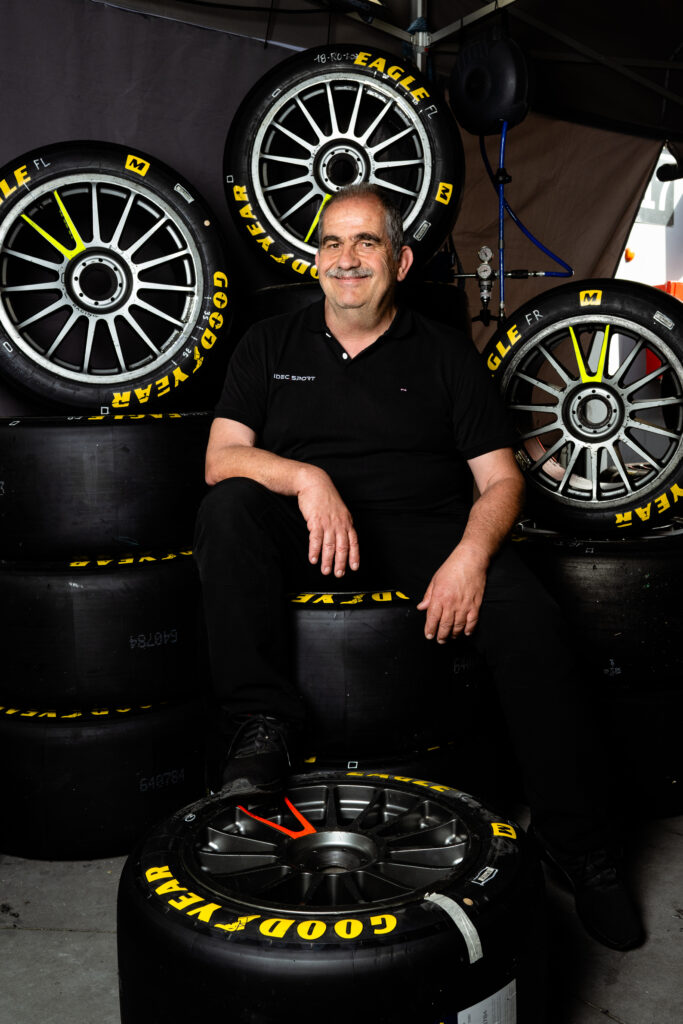

How long have you been taking photos?
Paola (PD): Photography has been my lifelong passion ever since I received my first Nikon film camera as a teenager. A turning point came when in 2013: I made a resolute decision to fully dedicate myself to photography. For the next two years, I worked as a photographer assistant for the British media agency, Adrenal Media (the official media agency for FIAWEC and ELMS Championships at that time). This experience provided me with opportunities to travel to renowned race circuits worldwide and build my own portfolio. From 2016, I am fully independent freelance photographer.
François (FR): I could say since forever, or almost. I think it was my father, himself an amateur photographer, who inspired me, as well as my grandfather, who used his sepia photos to tell me his story and that of our family.
What motivates you?
PD: Photography is the world where I almost hide. I’ve always been an introverted person, drawn to observing rather than standing in the spotlight. The camera becomes my shelter, a way to watch the world and its people from the background, slightly out of sight. It’s my voice without raising it, my way of being present without being too exposed. Through photography, I share how I see things, and when others connect with that perspective, it becomes my greatest motivation. Maybe it’s a form of acceptance, or simply the joy of discovering that what resonates with me can also resonate with someone else.
FR: Photography is about sharing. A photograph in itself is not particularly interesting; it’s what you do with it that counts. What happens around it: life, laughter, memories, sometimes emotion.
Is it easy to take photos of cars traveling at over 170 mph?
PD: Technically speaking, I find it much easier to capture a car at that speed than to capture human emotions. With some practice, photographing fast cars doesn’t feel overwhelmingly complicated. What I consider truly challenging is the speed at which emotions appear and vanish. Freezing those moments, translating them into a single frame that tells a story, is by far the hardest part of my work.
FR: Easy?! No…. Even today, I still take blurry photos! The speed, the noise, the wind -all of these things can distract the photographer, especially since we are often standing right at the edge of the track.
What kind of photos do you prefer to take?
PD: I think, I was born to be a portrait photographer. As I said before, I love observing people… their expressions, their eyes, the emotions hidden behind those eyes that words don’t always reveal. When I photograph someone, I’m always searching for that spark. That kind of photography is, without a doubt, the one I love the most.
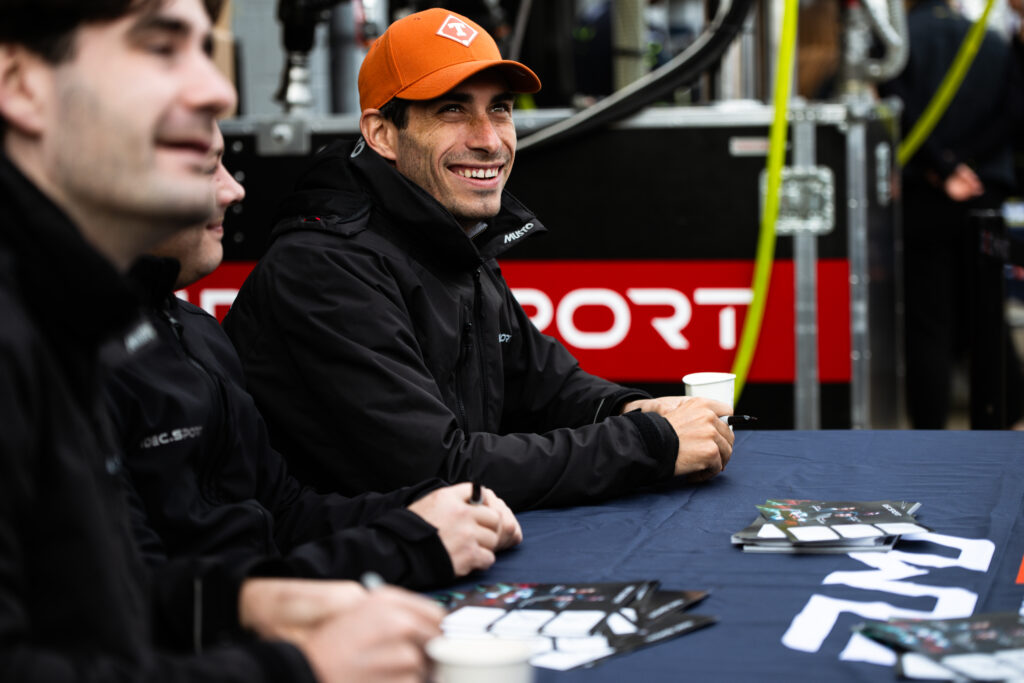

FR: Personally, I appreciate candid photos, atmospheric photos that capture the team’s mood. The human touch.
What is it like working with a racing team?
PD: Working for a racing team has been truly eye-opening for me. Motorsport wasn’t something I entered because of a love for engines, yet it became the world where I finally felt at home. Being part of a team in this environment is incredibly stimulating. You live the same emotions as the people around you: the tension, the energy, the anticipation. And when the race begins, when you’re behind the camera trying to capture those moments, the adrenaline is electric. It fuels an immense creative drive that I’ve never found anywhere else.
FR: It’s always a pleasure! I look forward to seeing the team at every meeting. It has to be said that IDEC SPORT is a family where you feel at home.
What equipment do you have?
PD: Even though I own two camera bodies, I prefer to work as light as possible, it’s a personal choice. At the moment I use Nikon equipment. Having a full range of lenses is essential to deliver strong results.
My kit covers everything from wide angles to long telephoto. My favorite lens are the 14–24mm, alongside the 35mm, 50mm, 85mm, and the 70–200mm. I also carry a telephoto that reaches up to 600mm.
FR: For specialists, I’m a Nikon user. I have a D500, but I mainly use my Z6. I dream of owning a Z8 one day, perhaps. In terms of lenses, I have an 18mm wide angle and a telephoto lens up to 500mm. Five lenses in total.
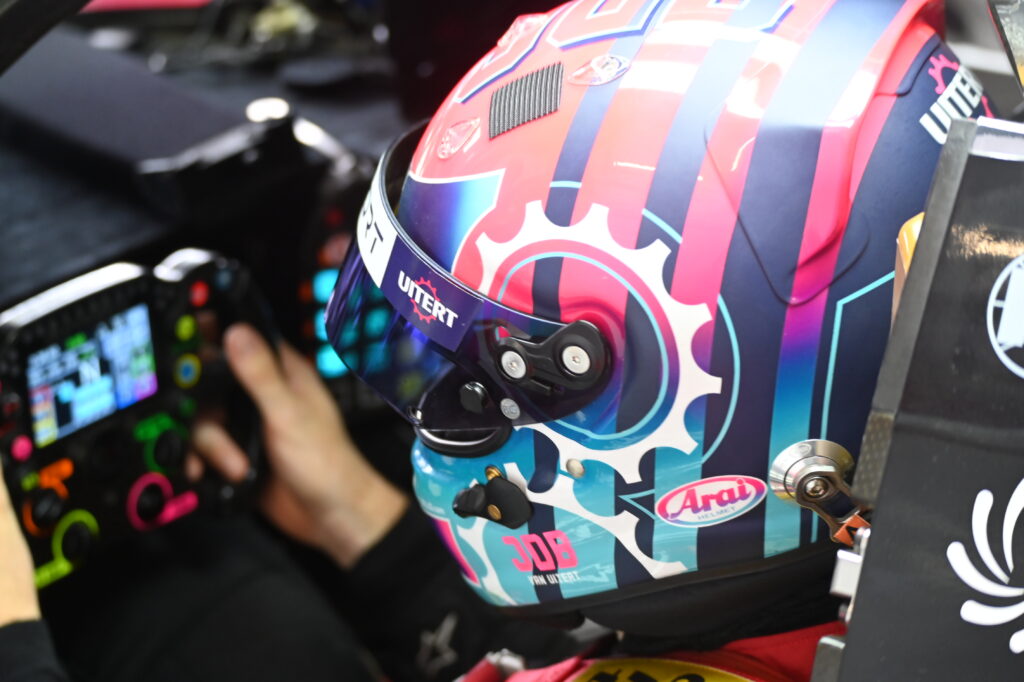
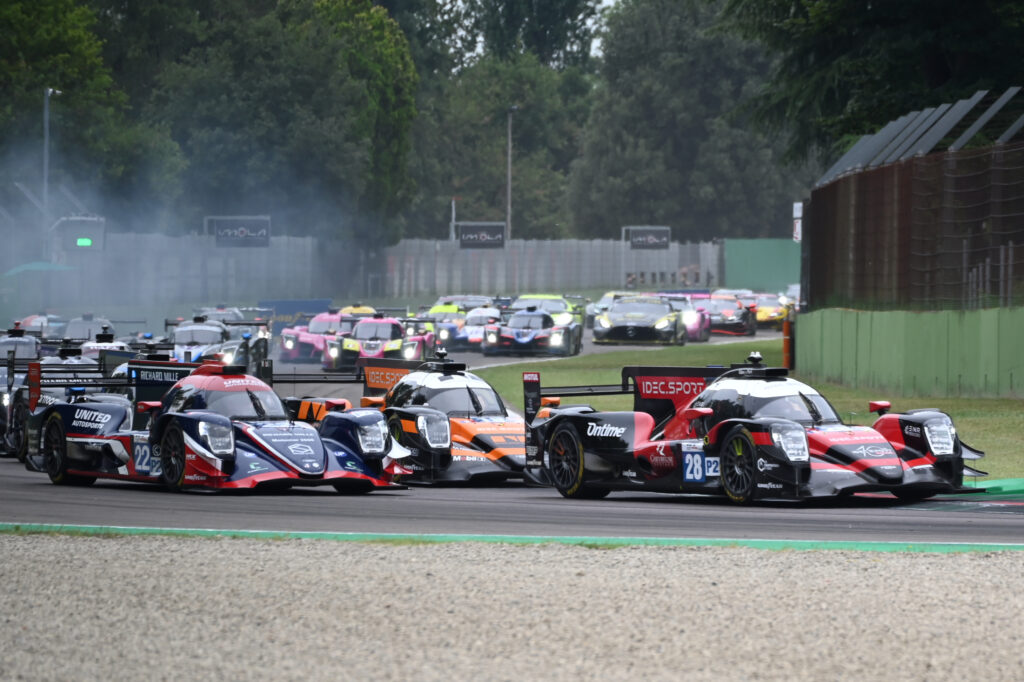
How much gear do you take to the track?
PD: All the equipment listed above. Studio gear such as lights, flashes, softboxes etc, I only bring when it’s specifically required. Everything else… lenses, camera bodies… is always with me.
FR: About ten kilos. But with our photographer accreditation, we are lucky enough to have quiet places to work in the Media Center, as well as cupboards to store equipment we are not using and our computers.
At the 24 Hours of Le Mans, what is your favorite time to take photos and why?
PD: There are two moments I love most at the 24 Hours of Le Mans. For me, nothing compares to shooting during sunset and at night.
Sunset is magical because every year Le Mans seems to push you to do better than the year before. When the days are clear and the sun sets, the colors of Le Mans are truly unique and unforgettable.
Then there’s Le Mans at night, especially from the pitlane. It’s one of those moments that always stands out for me during the race. Somehow, the colors become even more vivid, more intense, and you really feel the weight of the fatigue setting in.
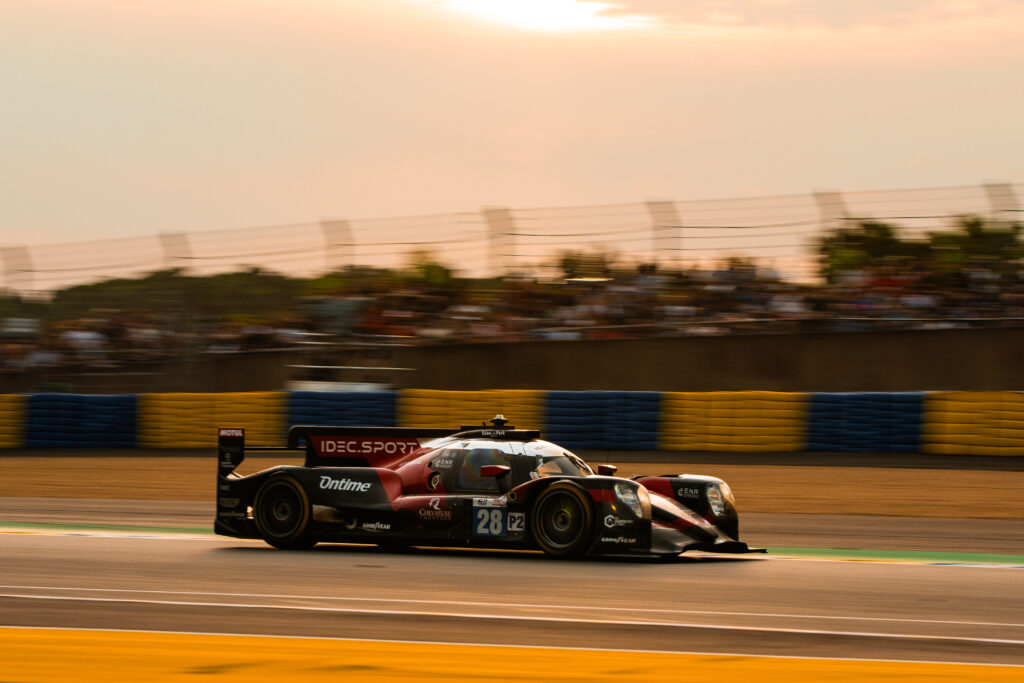

FR: Without a doubt, nighttime is magical and very difficult to photograph. The pit lane chicane, the pit lane… just talking about it makes me want to go back.
How many photos do you take each weekend and at Le Mans?
PD: I’ve never really counted how many photos I take, especially since my camera is almost always set to burst mode which, for the track, is essential for me. Very often, I end up with thousands of images at the end of the day, all of which I need to review before arriving at the final selection.
As for Le Mans the number is definitely staggering, easily thousands upon thousands, far more than during a normal race weekend.
FR: At first, a lot, but now I limit myself. 800 for Le Mans and 300/400 in ELMS.
What tool do you use to sort your photos?
PD: For the final selection of files, I use PhotoMechanic, while for post-processing I work in Lightroom.
FR: When I get back to the media center, I grab my computer and look at the photos live, sorting through them and keeping the ones I like. I hardly ever use editing programs. I don’t have the knowledge or the patience.
Do you use AI?
PD: Many AI features have been implemented almost automatically, for example in Lightroom and also in Photoshop. These tools definitely make the post-processing workflow much simpler and faster.
So, I can say that yes, some of the functions I use in Lightroom are essentially powered by AI… so in that sense, I do make use of it.
Did you go to school to become a photographer?
PD: I’ve never formally attended an art or photography school. I basically learned photography on my own, through self-teaching and practice. Later, in 2011, I decided to take a short basic photography course at an institute in Milan. It only lasted a few months, and honestly, it wasn’t particularly useful for learning photography, since I already knew the fundamentals.
However, it was one of the first places where I could really engage with other people and with professionals who evaluated my work, rather than just receiving feedback from friends or family, which isn’t always objective.
I remember it being extremely important for me because, by the end of the course, the instructor strongly encouraged me to continue pursuing photography and not to give it up. That push meant a lot and truly shaped the path I’ve followed since.
FR: Absolutely not! I’m not a photographer, I’m IDEC SPORT’s “impostor”; my profession is a far cry from the art of photography.
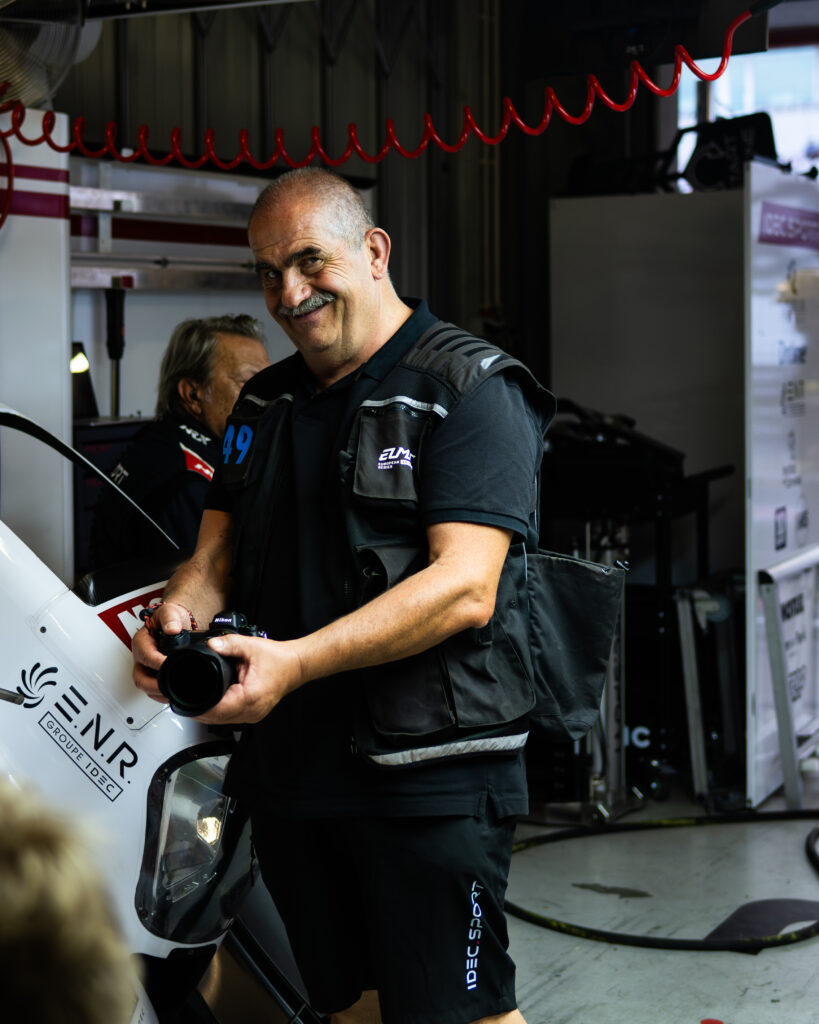
What would you say to young people who want to get started?
PD: I would recommend two essential things. If photography is one of the ways you most love to create art, to express yourself, and to share a part of who you are, don’t stop at the first judgments you receive. Don’t give up too quickly.
Also, don’t rely only on the positive feedback of friends and family, because it’s not always objective. Learn to listen carefully to criticism too, but use it as fuel to grow rather than letting it bring you down. If you believe you have a talent, feed it. Don’t stop because someone tells you, you’re not good enough or that opportunities don’t exist. Passion is passion… and if it’s meant to become a profession, you’ll eventually find your way there.
And then there’s practice: observe, always observe. Look at the work of photographers from the past and present, and let their vision inspire your own.
FR: Photography is beautiful, a great opportunity to share and experience rare moments. Be bold and don’t imitate others, take your photos as you feel them.
How did you join the IDEC SPORT team?
PD: I was first contacted in 2020 by one of the team’s drivers, Paul-Loup Chatin. He was the one who found me and asked if I was interested in working and collaborating with the team. Since then, I’ve been working with IDEC: from 2020 through to 2025, I’ve never stopped collaborating with them.
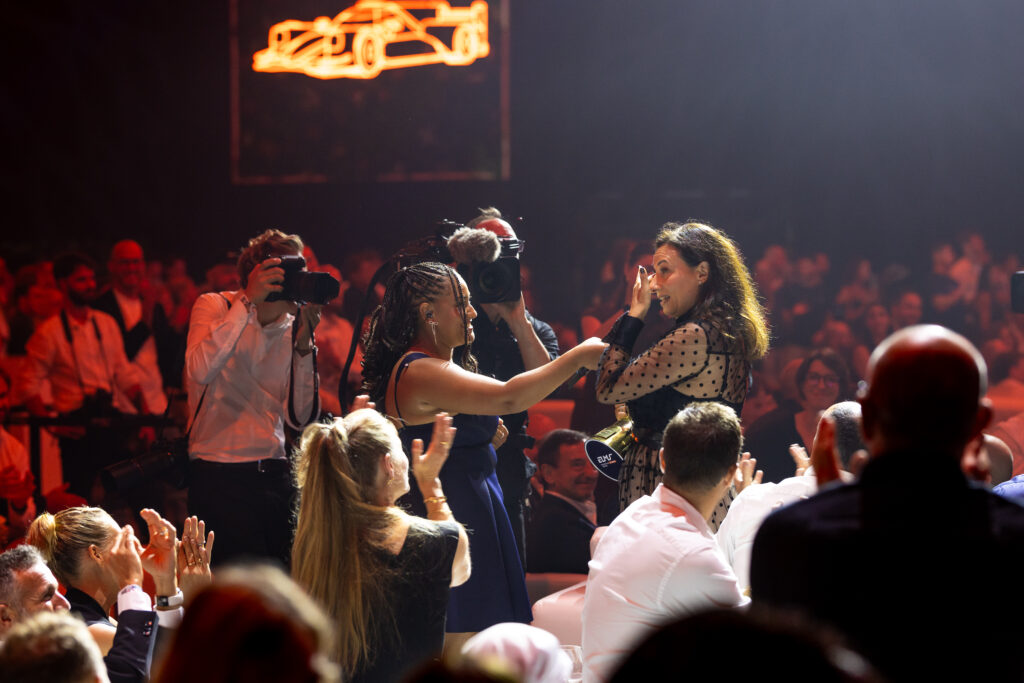
FR: IDEC SPORT is a story of friendships. I am lucky: Patrice Lafargue and I have known each other since childhood. He was my brother’s best friend… and a few decades later, our friendship grew stronger, and then one day… I arrived at Silverstone in 2016 and haven’t stopped since. This is my fifth year, I think, with photo accreditation for IDEC, and I cover the entire season. I’m happy to be part of the IDEC family.

Apart from Le Mans, what is your favorite circuit in the ELMS season?
PD: Spa Francorchamps is by far one of my favorites.
FR: Trick question. For the excitement, I would say Spa; for the photo, Portimao; for the light, the Italian circuits.
How many kilometers do you ride per day?
PD: I used to walk so much every day that I was probably fitter than some of the drivers. Now with my electric scooter I fly everywhere in no time… but unfortunately, only the scooter keeps its slim line 😂
FR: Not bad…you need good shoes. Sometimes a good bike, especially at Le Mans to cover the entire circuit.
